This will likely be a busy week. Earnings season is winding down, after all, however we’ve plenty of financial knowledge, beginning on Wednesday with the , which is predicted to rise by 0.3% m/m from 0.2%. In the meantime, core CPI is predicted to extend by 3.1% , in comparison with 3.2% final month. Headline is predicted to rise by 0.3%, down from 0.4% final month, and headline CPI is projected to be 2.9%, the identical as final month.
Then, on Thursday, we’ll get PPI, and on Friday, retail gross sales. We’ll additionally see some key Treasury bond auctions this week. On Tuesday, February eleventh, we’ll have the public sale. On Wednesday, February twelfth, the will likely be auctioned, and on Thursday, February thirteenth, the . These will likely be necessary to observe, particularly given the latest volatility within the bond market.
Robust Jobs Report
Trying again at a few of final week’s financial knowledge, the was a lot stronger than anticipated, particularly when contemplating the general nonfarm payroll numbers. We mentioned benchmark revisions the earlier week, which had been higher than anticipated. Final month’s determine was revised considerably greater, from 256,000 to 307,000.
Whereas this month’s report did miss estimates—coming in at 143,000 versus expectations for 170,000—the upward revisions from final month clarify a few of that weak spot.
The fee fell to 4.0%, in comparison with the 4.1% estimate. Common hourly earnings elevated by 0.5%, effectively above the 0.3% estimate. Yr-over-year, common hourly earnings rose to 4.1%, simply beating the three.8% estimate. Final month’s quantity was additionally revised from 3.9% to 4.1%. These had been substantial numbers general, particularly when considered within the context of job creation, a declining unemployment fee, and rising wages.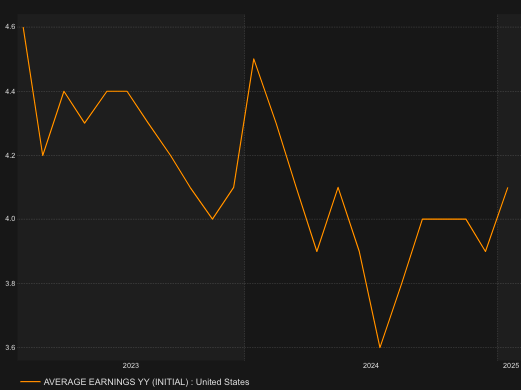
The numbers had been additionally notable. One-year inflation expectations jumped to 4.3% from 3.3% final month—a 100-basis-point enhance. 5-year expectations rose to three.3%. We’ve seen this 3.3% determine within the preliminary numbers earlier than, and it has usually been revised down to three.2% within the ultimate studying. If the ultimate quantity does are available at 3.3%, it may mark a major breakout.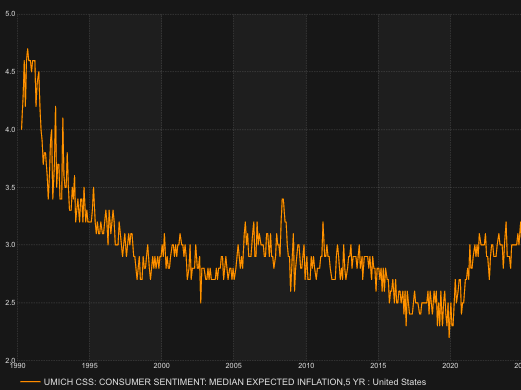
Inflation is, in some ways, psychological. When individuals anticipate greater inflation, they have a tendency to spend extra sooner and turn out to be extra accepting of value will increase. If customers increase their expectations for future costs, the Fed could also be shedding its grip on holding inflation expectations anchored.
The latest rise in inflation expectations and survey knowledge from companies and regional Feds recommend rising inflationary pressures. January inflation swaps had been priced at round 2.92%, barely above expectations. These numbers can shift as we get nearer to the discharge date, but when core and headline CPI each are available at 0.3%, it could point out that inflation has accelerated over the previous six months, diverging from the Fed’s goal.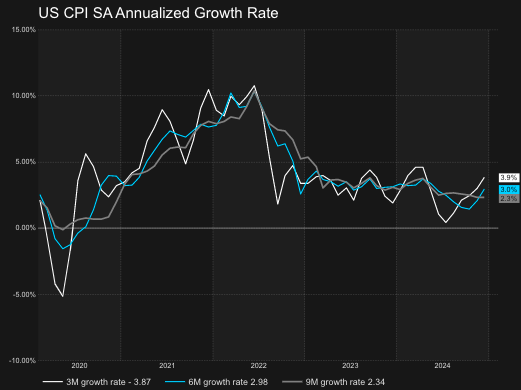
The important thing query is whether or not this development will reverse within the subsequent three to 6 months, however proper now, inflation swaps and bond markets recommend concern. Two-year inflation swaps have moved again up towards the two.64% space, close to the higher finish of their vary. A breakout above 2.70% may sign a transfer towards 3.0%.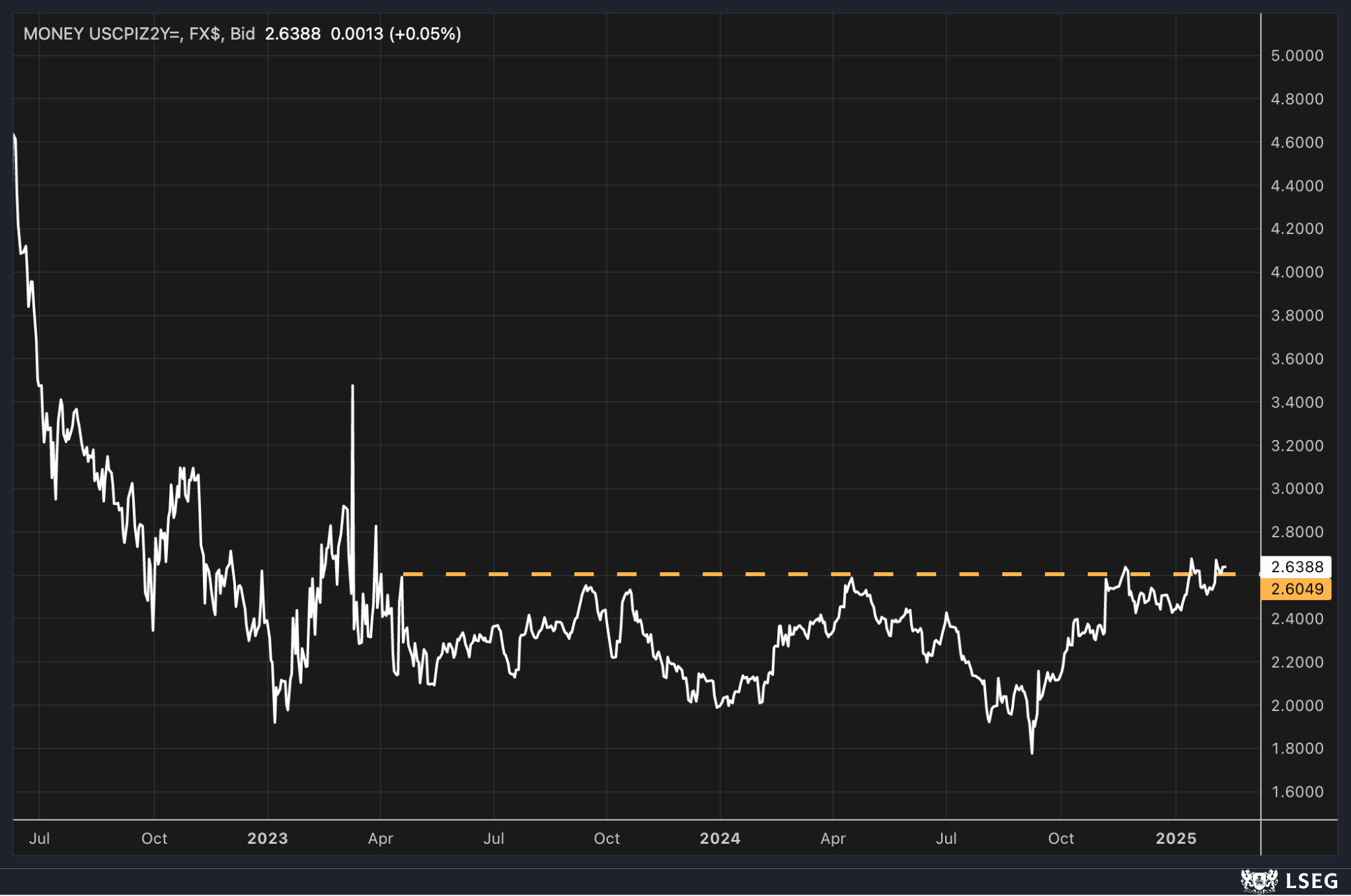
All of it will influence rates of interest. On Friday, the 10-year yield bounced again to round 4.5%. We mentioned final week how the 61.8% retracement stage was appearing as assist, and thus far, that stage has held. If the 10-year yield strikes greater once more this week, it could be one other warning signal.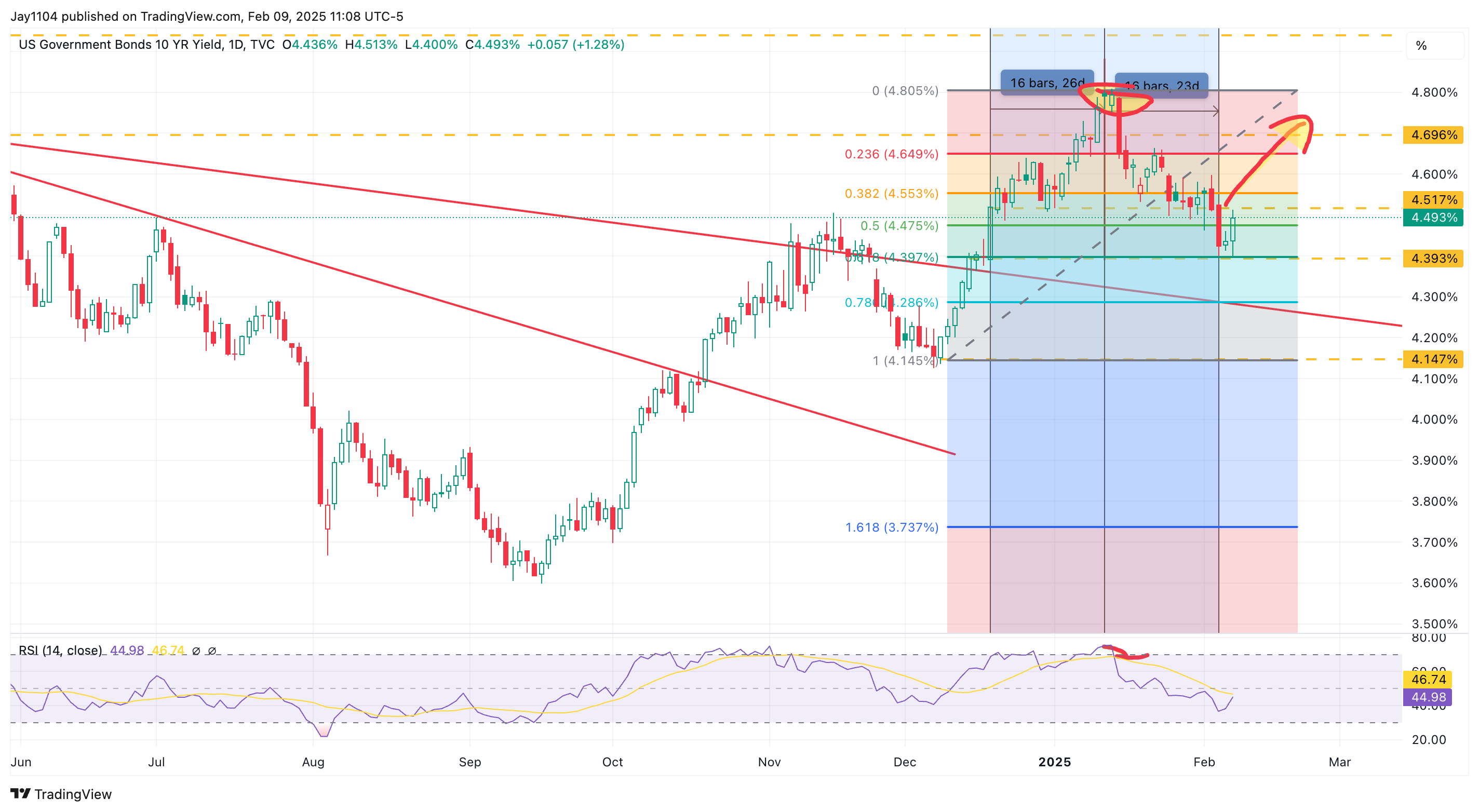
Fairness financing prices proceed to battle, with little enchancment. February contracts are buying and selling at simply 39 foundation factors above, whereas March contracts are at 52.5 foundation factors—down sharply from their 180-basis-point peak earlier than the Fed assembly. Demand for leverage has pale, which can clarify why equities have struggled not too long ago. The market seems extra cautious about taking over leverage at these ranges.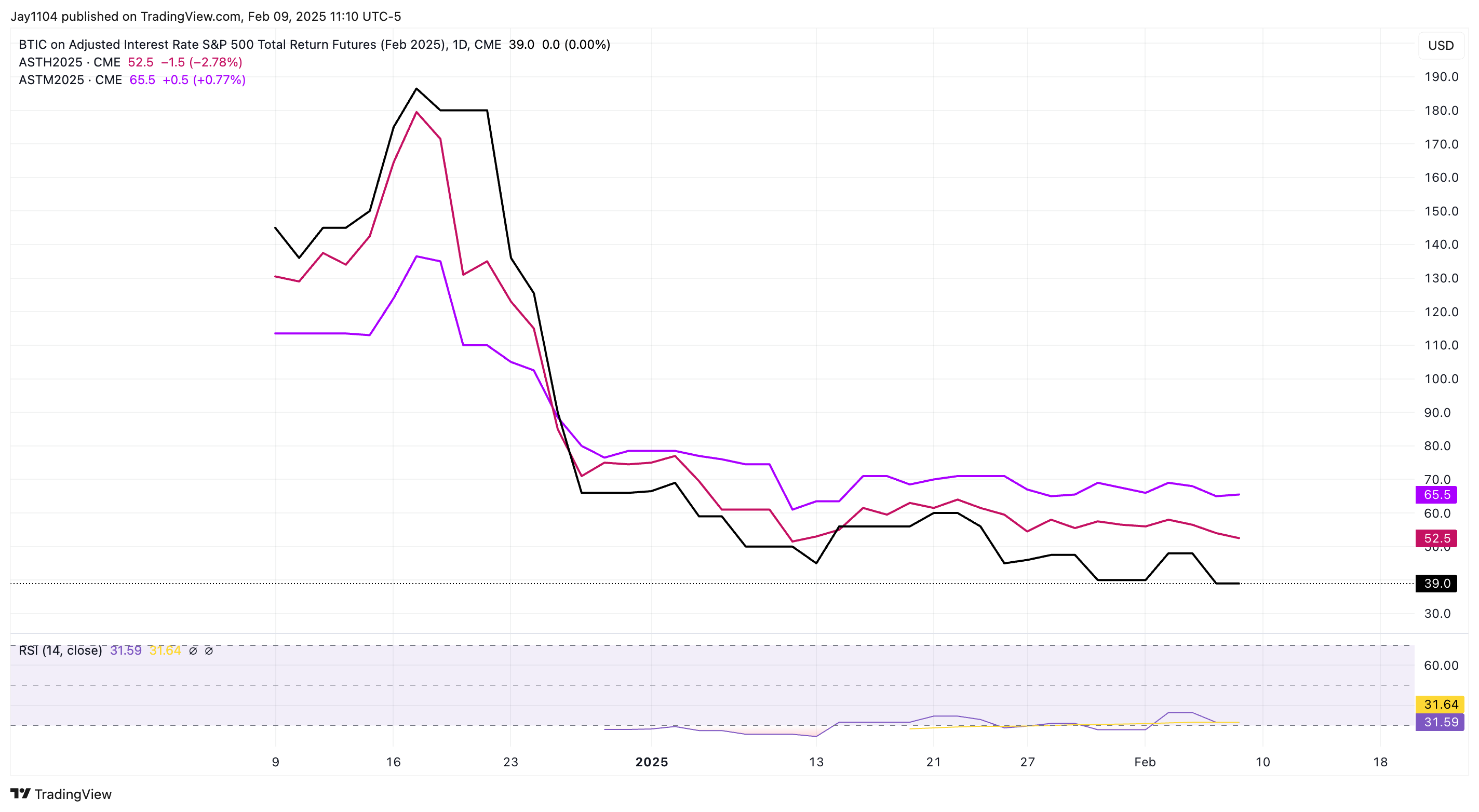
Trying on the , we’ve seen decrease highs forming—January twenty fourth, January thirty first, and final week—together with decrease lows since January twenty first.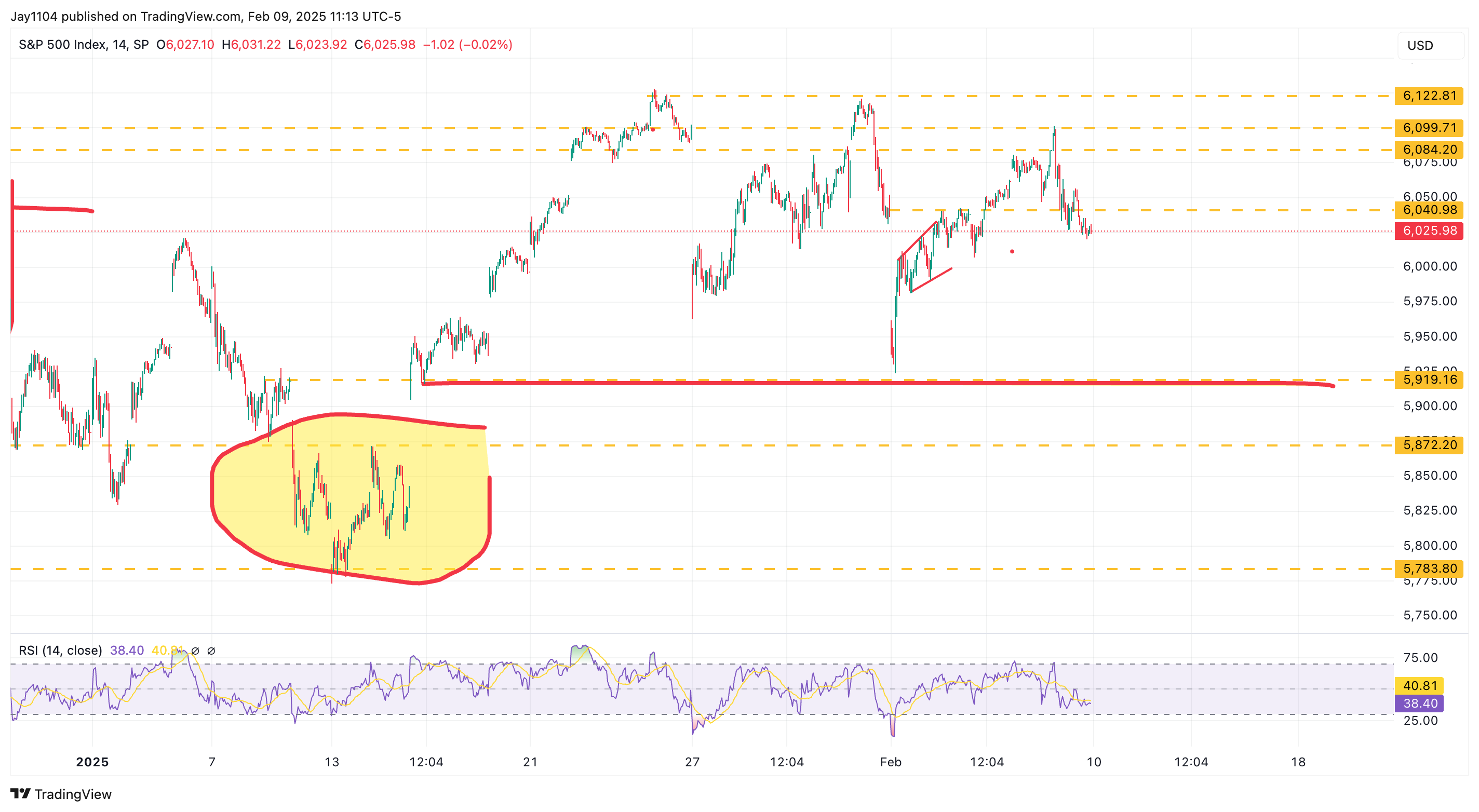
The has but to surpass its December sixteenth excessive, and even this yr’s excessive stays the January twenty fourth stage, reinforcing the sample of decrease highs.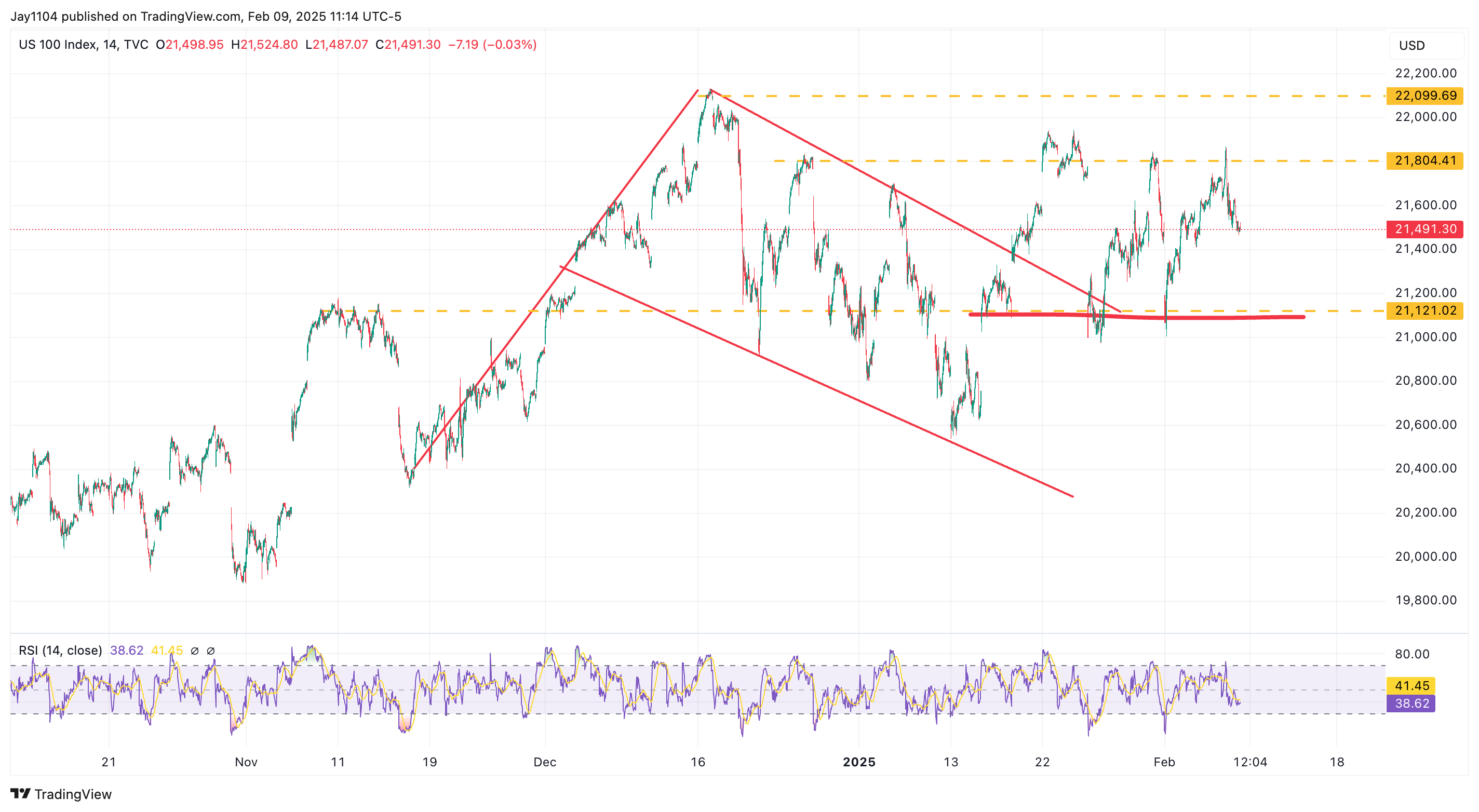
The appears to be like weak as effectively, dropping on Friday. It hit the 61.8% retracement stage on January seventeenth, stalled, tried a breakout, and is now transferring decrease once more.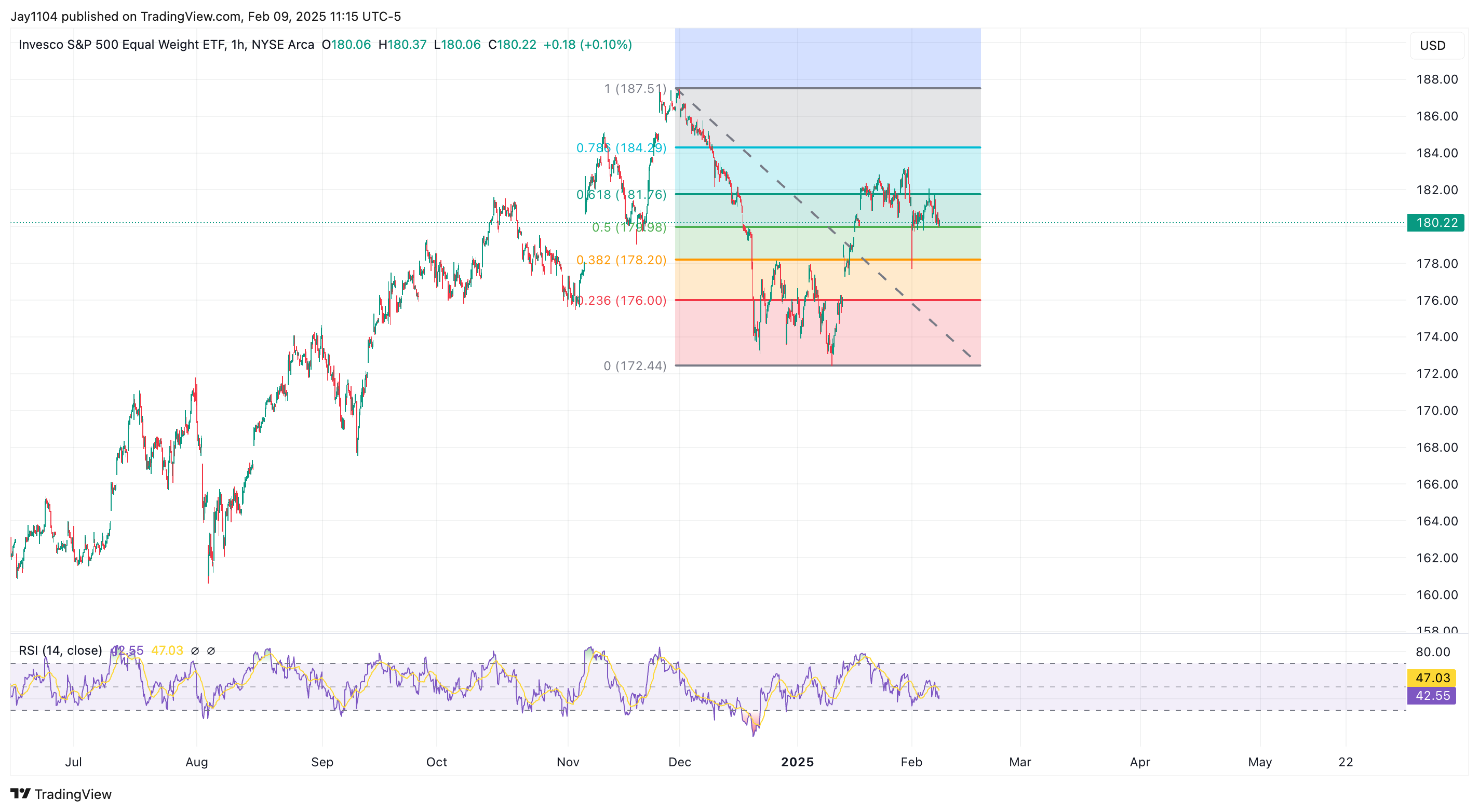
The was hit exhausting on Friday, dropping practically 3% following the roles report, highlighting its sensitivity to rising rates of interest.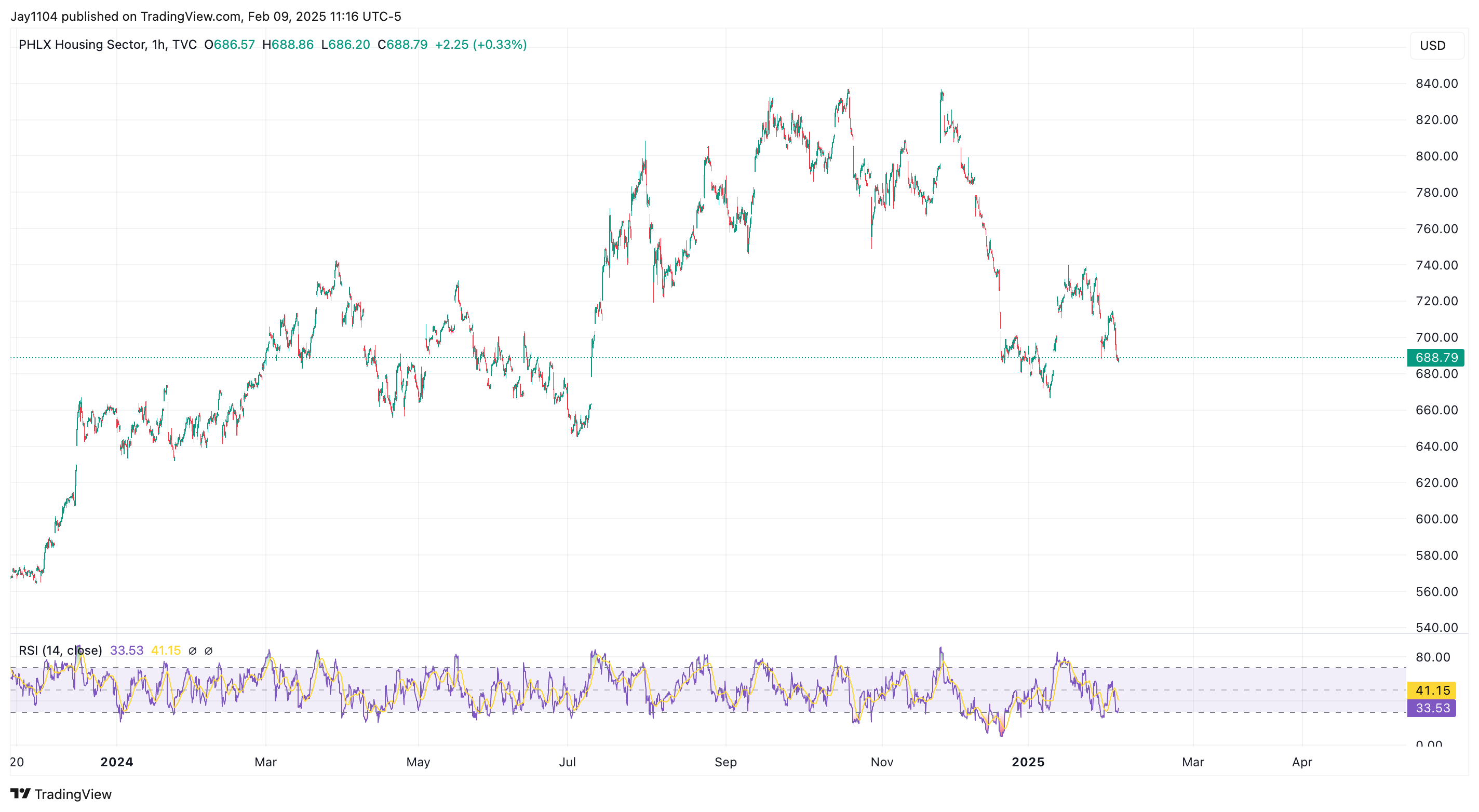
One final key knowledge level: December 2025 Fed funds futures are buying and selling round 3.98%, just some foundation factors under the 4.06% higher vary in mid-January. If we get a sizzling CPI report this week, these futures may transfer again above 4.0%, signaling that the market is pricing out fee cuts completely. Given final week’s stronger-than-expected wage knowledge, rising labor prices, and declining productiveness, inflation dangers stay elevated. Traditionally, rising labor prices and falling productiveness have been related to greater inflation.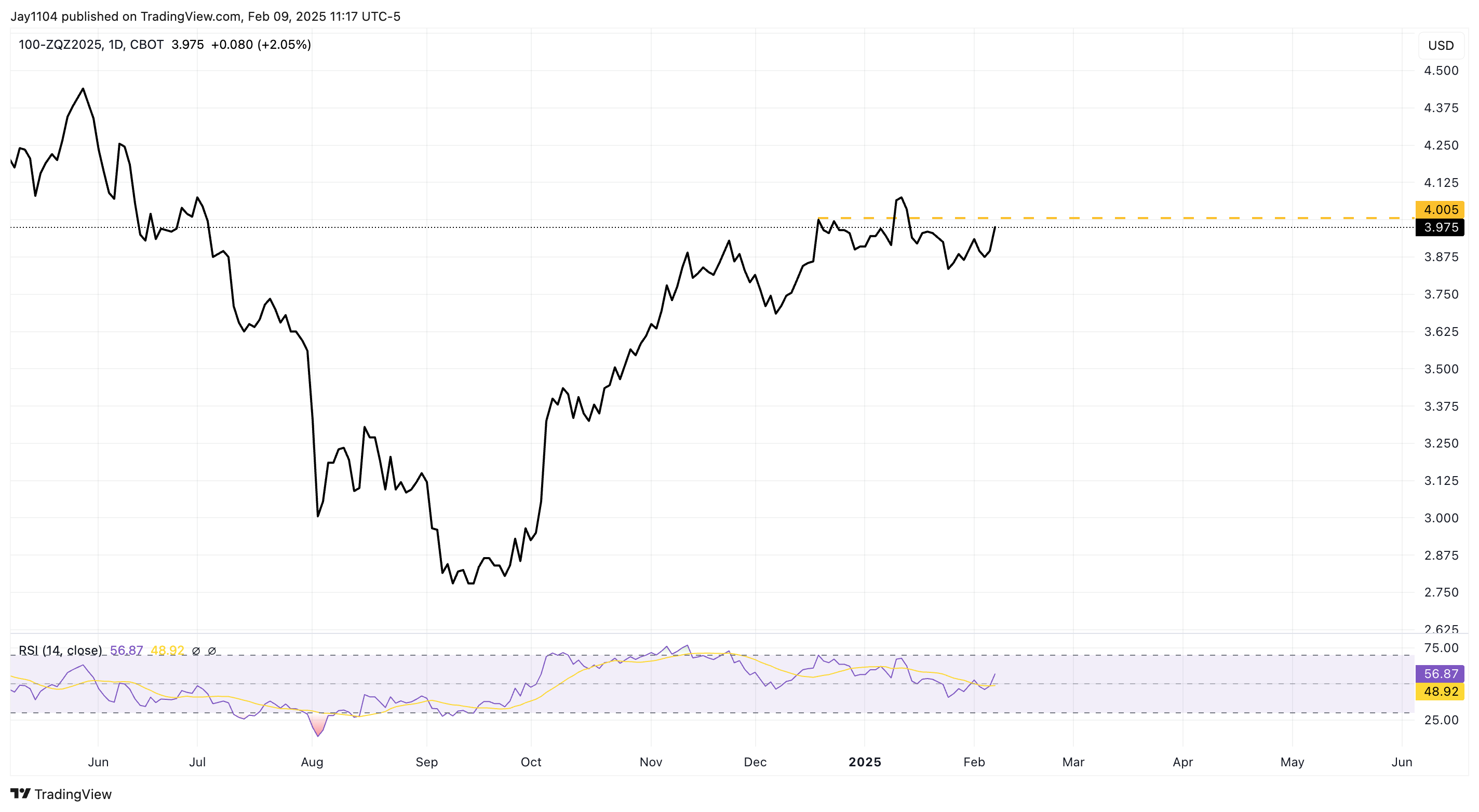
Anyway, have an awesome weekend, and I’ll see you on Monday. Bye!
Phrases By ChatGPT
1. Inflation Swaps
A spinoff contract used to hedge or speculate on future inflation. One social gathering pays a set fee, whereas the opposite pays a floating fee based mostly on precise inflation. The two-year inflation swap fee displays market expectations of common inflation over the subsequent two years.
2. 61.8% Retracement Degree (Fibonacci Retracement)
A technical evaluation idea the place 61.8% is taken into account a key retracement stage based mostly on Fibonacci ratios. It suggests a possible assist or resistance stage the place costs could reverse.
3. Treasury Auctions (3-Yr, 10-Yr, 30-Yr Notes)
U.S. Treasury securities are offered at public sale, and their demand impacts rates of interest. The bid-to-cover ratio (not talked about however related) signifies how sturdy demand is.
4. Core CPI vs. Headline CPI
Core CPI: Excludes meals and vitality costs, that are unstable.
Headline CPI: Consists of all objects within the client value index.
5. PPI (Producer Value Index)
Measures inflation on the wholesale stage, exhibiting price modifications for companies earlier than reaching customers.
6. Fed Funds Futures (e.g., Dec 2025 Contracts at 3.98%)
Derivatives that predict future Federal Reserve rates of interest. A greater value implies decrease anticipated charges, whereas a lower cost suggests greater charges.
7. Repo Market (Repurchase Agreements)
A short-term borrowing market the place securities are offered with an settlement to repurchase them later. A decline in repo exercise suggests decrease demand for leverage (borrowed cash to take a position).
8. Nonfarm Payrolls (NFP) & Benchmark Revisions
Nonfarm Payrolls: Measures U.S. job progress, excluding farm staff and another sectors.
Benchmark Revisions: Annual changes to employment knowledge, which might considerably change prior months’ reviews.
9. RSP Index (Equal-Weighted S&P 500)
In contrast to the common S&P 500, which is weighted by market cap, the RSP index provides every inventory an equal weight, exhibiting how all shares (not simply the most important) are performing.
10. Fed Chopping Charges vs. Market Pricing Out Price Cuts
Chopping charges: The Fed lowers rates of interest to stimulate financial progress.
Pricing out fee cuts: Market expectations shift away from anticipating decrease charges, typically attributable to sturdy financial knowledge or greater inflation dangers.